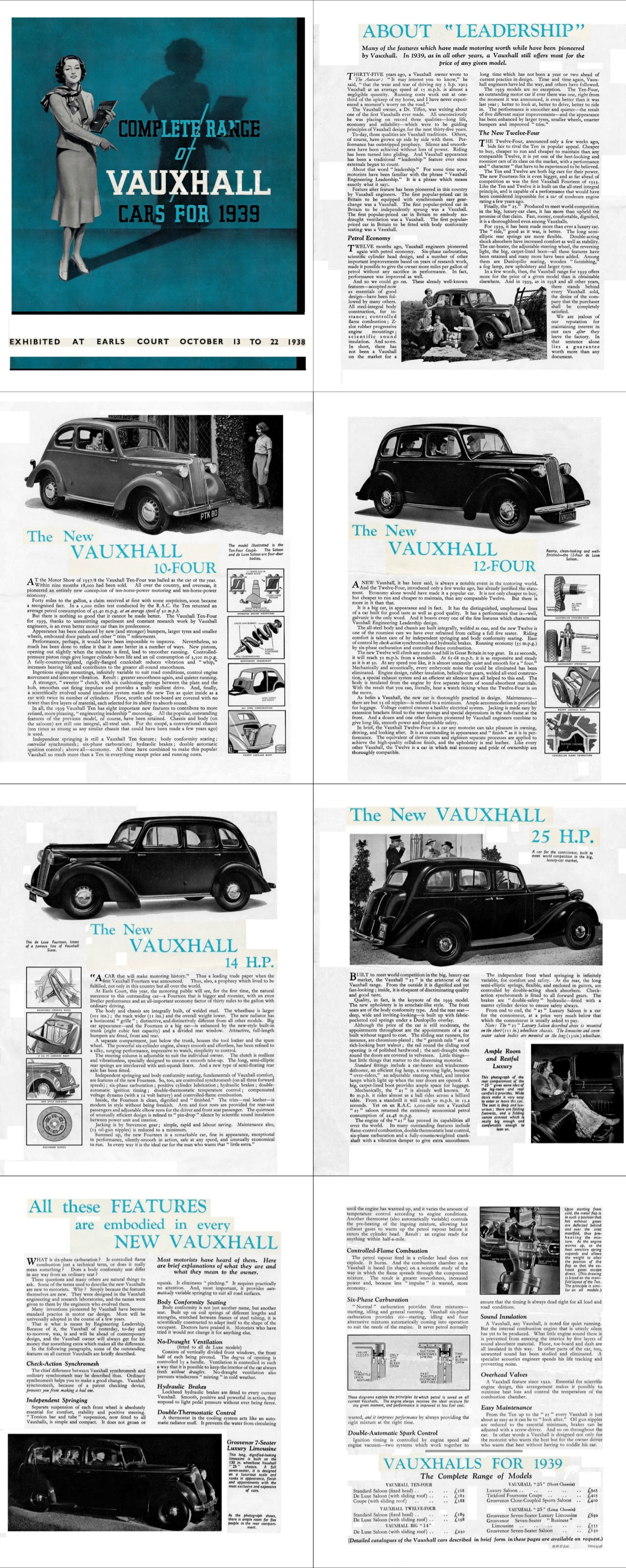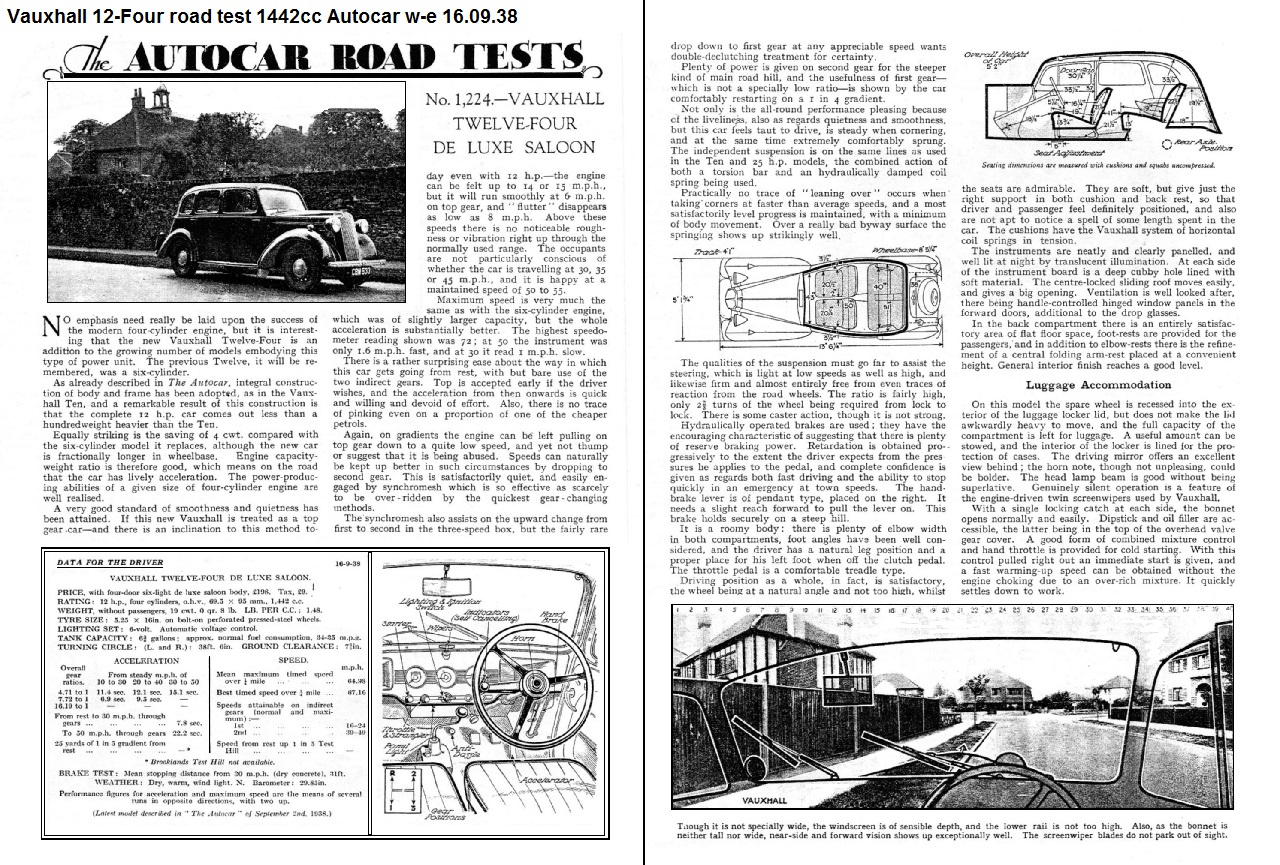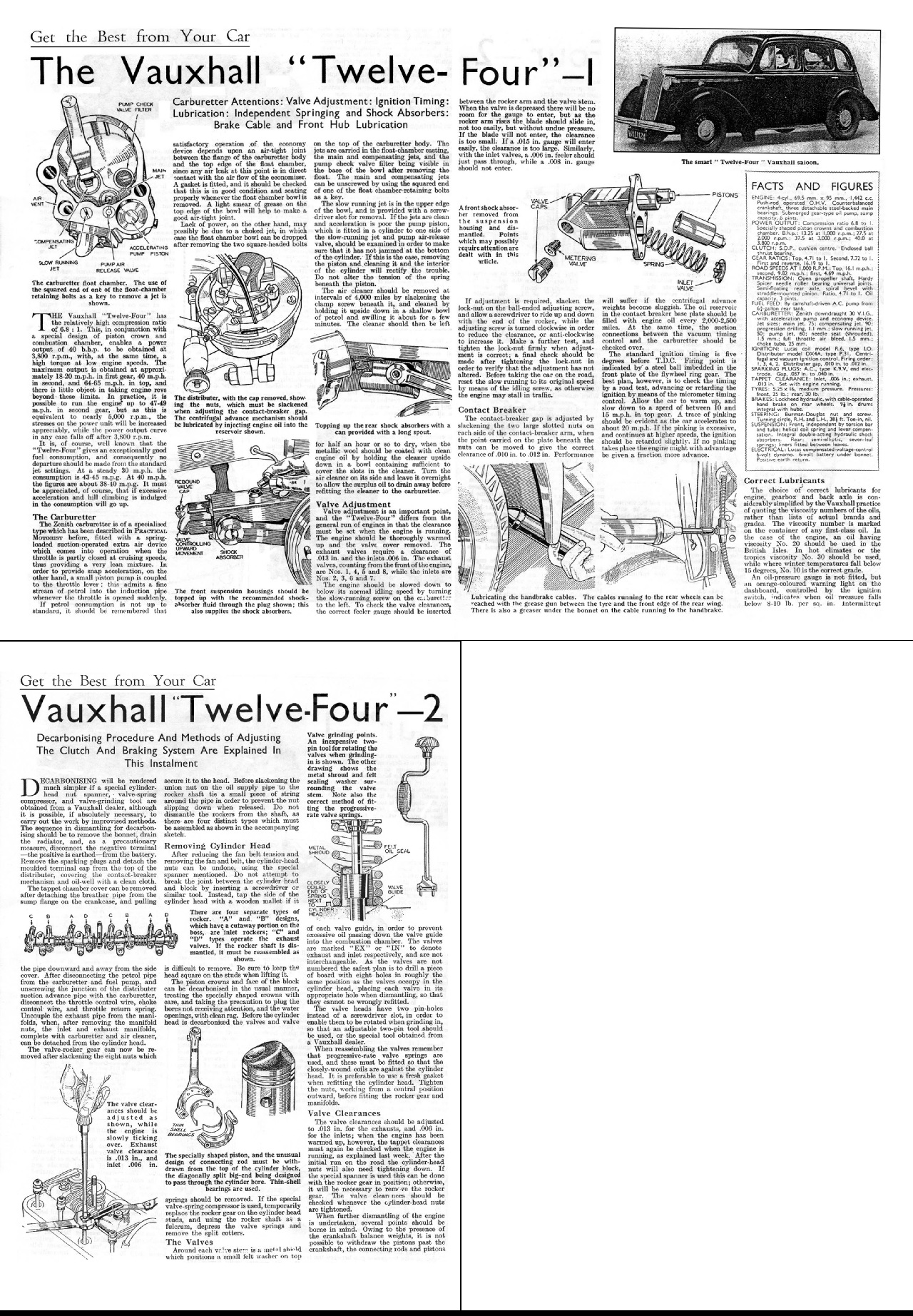

1. VAUXHALL I - 12-FOUR BACKGROUND:
The launch of the Vauxhall 10-Four at the London Motor Show in October 1937 was a motor industry game-changer. No manufacturer anywhere in the World could match the 10-Four specification at the price and for Vauxhall it was a huge sales success from the start. What was not public knowledge, outside of Vauxhall, was that it was the first part of an ambitious programme to completely redesign the rest of their car range to the unitary construction technique pioneered by the Vauxhall 10-Four. The plan was scheduled for completion in late 1940 and would have been if it wasn’t for Hitler’s attempt to interfere in human evolution, however the second phase was launched on time in September 1938 – the Vauxhall 12-Four.
2. VAUXHALL I - 12-FOUR DESIGN & ENGINEERING:
Vauxhall had been successfully represented in the 12hp class for a number of years with the lower output versions of the Light Six. With 6-cylinder engines and a relatively heavy body mounted on a separate chassis the cars had proven to be reliable, robust and conventionally engineered which appealed to what buyers wanted at the price. There was no chance of creating the same sort of impact with the replacement that had been generated by the 10-Four and Vauxhall were under no illusions of anything different but by applying the same engineering principles to a larger design Vauxhall were convinced they could under-cut all their principle rivals in the 12hp field whilst at the same time offering a better specification & performance. An element of risk was still involved in this strategy because one of the selling points of the previous model was the smooth 6-cylinder engine, the new car would not only use 2 less cylinders but also be of a smaller capacity. However, the Vauxhall 12hp cars had always lived in the shadow of their more powerful 14hp variants and were always undersold, Vauxhall wanted to position their new 12hp 4-cylinder car closer in price & position in the range to the new H Type 10-Four. Contrary to popular myth the “I” designation for the 12-Four was not short for “Integral” construction it was merely the next alphabetic character after the “H” used for the 10-Four. The same 3-speed gearbox was used from the 10-Four with synchromesh on 2nd & 3rd and although the same design the rear axle ratio was 4.71:1 vs 5.14:1 for the smaller car.
Although brandished as a completely new engine by Vauxhall the 12-Four engine was an enlarged version of the 1203cc OHV unit fitted to the H Type models and shared many common components which helped to keep tooling and development costs to a minimum. The bore size was increased from 63.5cm to 69.5cm giving a capacity of 1442cc and used the same crankshaft supported by 3 main bearing. Also the same, was the highly efficient Zenith 30VIG3 carburettor made to Vauxhalls own specifications and which contributed much to the fuel economy for which Vauxhall were gaining an enviable industry reputation. The engine used a slightly higher compression ratio, 6.8:1 instead of 6.5:1 and produced 40bhp@3800rpm with a very flat torque curve that gave 68lb.ft between 1500rpm to 2500rpm. For a small 4-cylinder engine the 1203cc unit fitted to the 10-Four was remarkably smooth, if anything the larger 1442cc version was even better in this respect. A detailed description of the engine can be found in the H 10-Four section of vauxpedia and so there is little point in duplicating it here.
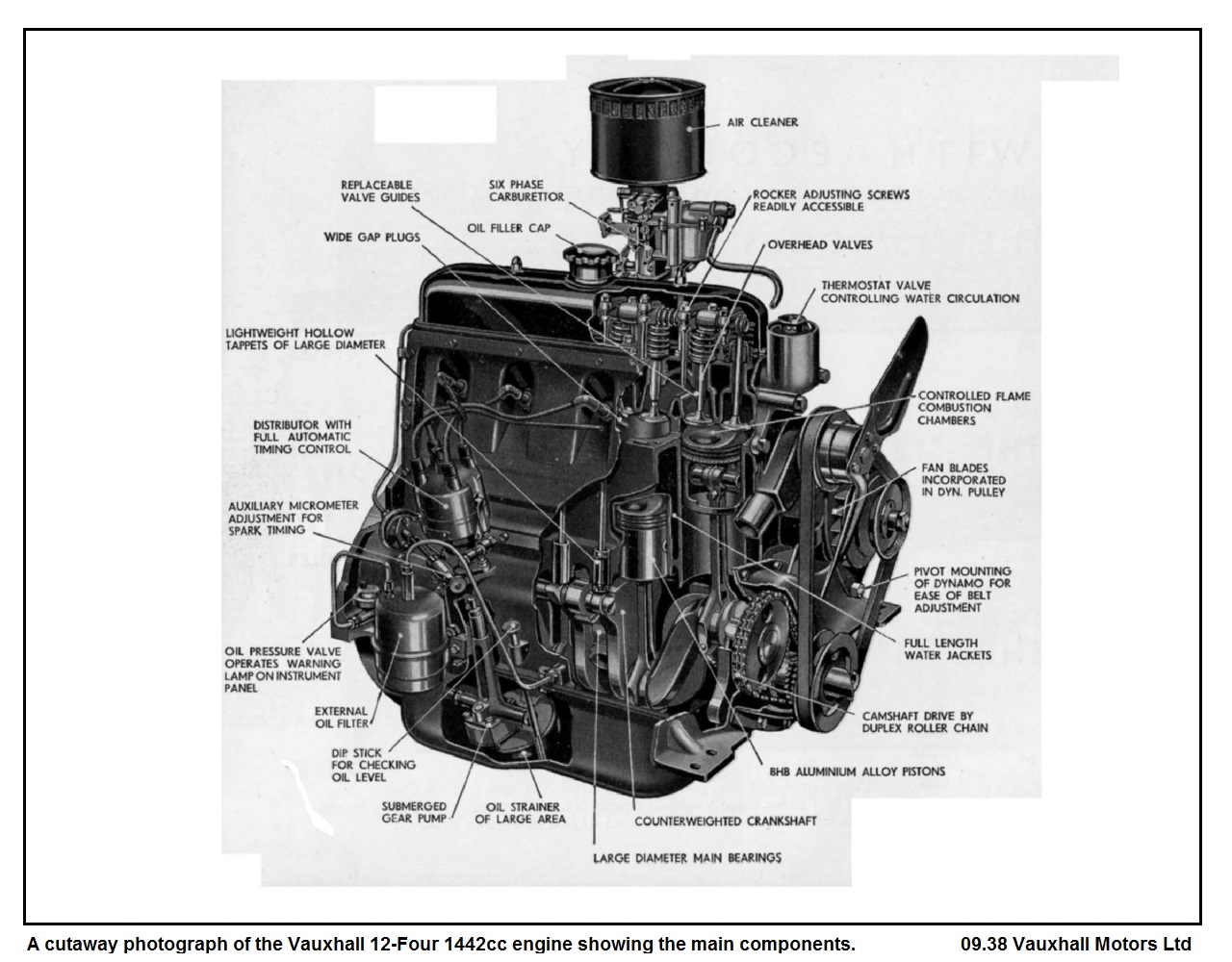
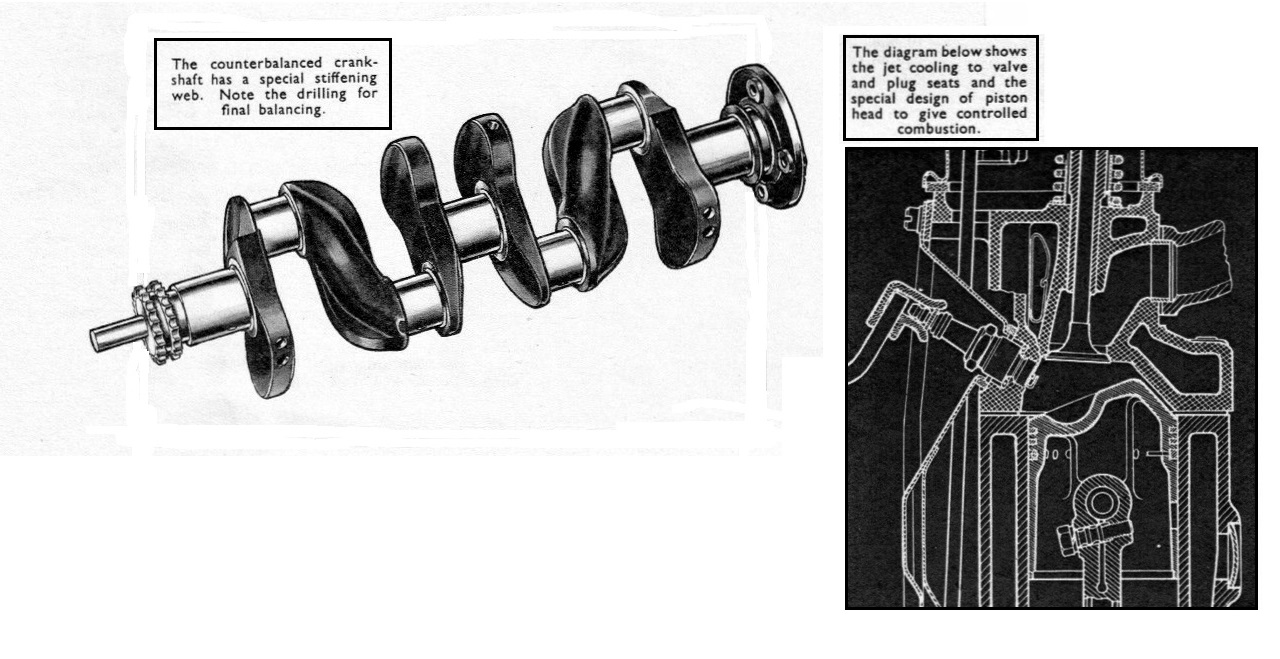
David Jones was largely responsible for the body design which was an evolution of the previous models styling combined with the greater simplicity and lack of unnecessary embellishment which characterised the 10-Four. The unitary body was crudely an amalgamation of the H front with a unique rear half which used a 6-light window arrangement and sat on a wheelbase stretched from 94ins to 101.25ins, slightly longer than the previous models. Vauxhall claimed the car weighed 30% less than its nearest rivals, and at 18.5cwt it was certainly lighter than the previous Vauxhall 12hp, it was also considerably more spacious inside. Luggage space was still a secondary consideration at the time but the 12-Four did at least move the spare wheel to a protrusion in the boot lid, even so the overall luggage capacity actually reduced compared to the previous models. Like all its forbearers the car was instantly recognisable as a Vauxhall from the front by virtue of the traditional bonnet flutes. The torsion bar independent front suspension skilfully modified by Maurice Olley for the 10-Four proved more troublesome in the larger car, probably the result of greater stresses involved with the heavier bodywork but just as much a result of the fact that metallurgy was still playing catch up to the design itself. Another issue which became apparent in upscaling the size of a unitary body shell was noise resonance, this was countered by extensive sound deadening material on the interior side of the floorpan.

Lockheed drum brakes all round provided the stopping power for the 12-Four and were the same design as used on the 10-Four with a split circuit to prevent complete loss of braking in the event of a fluid leak.
Announced to the press and dealers in the first week of September 1938, as a 1939 model, the 12-Four still managed to steal the headlines. Vauxhall were offering a large & roomy family car with near 70mph performance, virtually guaranteed 35mpg economy, independent front suspension, synchromesh gears, hydraulic brakes and a well-trimmed interior for a starting price of £189 for the Standard Saloon & £198 for the Deluxe version with a sunroof extra detail finish. This was a phenomenal achievement and under-cut every rival 12hp car on the market, none of which offered the same features, performance or economy as the Vauxhall. Motoring press & car buyers were impressed and Vauxhall capitalised on the interest with a major advertising campaign orchestrated by Palmer Phillips focusing on how the 12-Four was built to save owners money. A similar scheme was organised to the 10-Four launch whereby a special kit could be fitted to the dashboard and filled with petrol to show prospects just how little fuel the car used – presumably whilst smoking a cigarette at the same time!
The 12-Four was an immediate success in the 12hp sector of the market, yet again Vauxhalls rivals were left fumbling around trying to find out how the Luton factory could offer so much for so little and still make a profit – which Vauxhall certainly did. Unfortunately, the 12-Four was only on sale for just over 18 months before production was interrupted by World War II but there were, surprisingly, some changes announced for the 1940 model year, these included a new radiator design with horizontal slats and a centre bar along with a wider rear seat design. The Standard model was dropped and the price was reduced still further to £185 for the remaining Deluxe version which still included a steel sunroof as standard equipment. A total of 10,164 were produced before production finally petered out in May 1940.
The spread of unitary construction throughout the Vauxhall range, and to a few other manufacturers had many owner benefits but there were some unfortunate side effects such as the propensity of the bodies to rust and also the very rapid decline in coach builders. They had seen a thriving market disappear being unable to offer different body styles as they had done with the chassis based models.
Today there are very few pristine examples left of the Vauxhall 12-Four and it has strangely been ignored by collectors and historians alike which is a shame because if WW II hadn’t happened it would have been a huge success, by the time it was resurrected back into service in 1946 it was a little past its best.
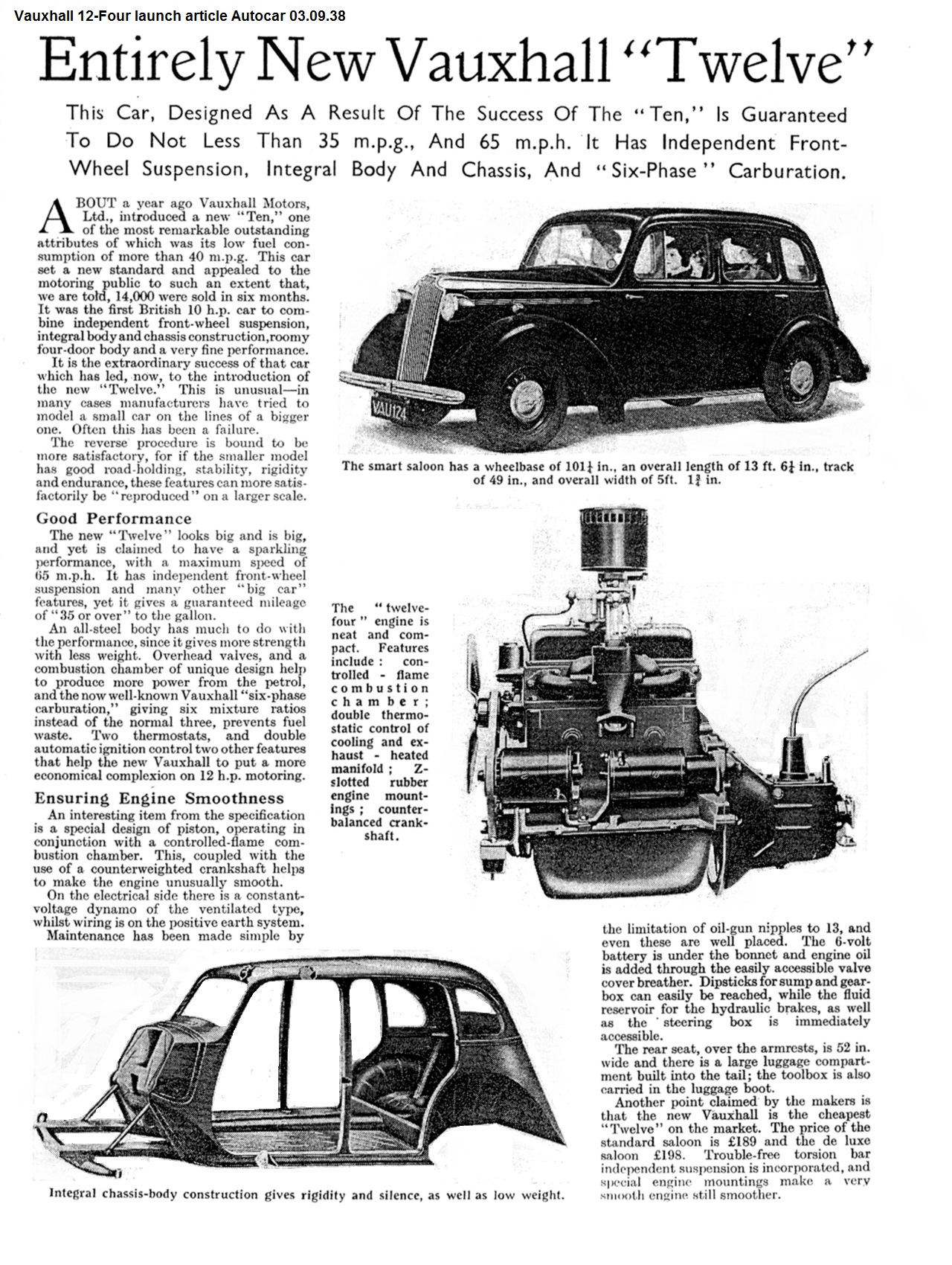
3. VAUXHALL I - 12-FOUR PRESS PHOTOGRAPHS



